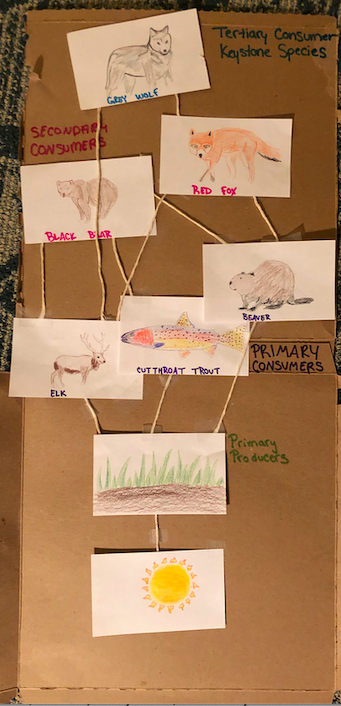Welcome to Change is Simple’s Online Learning Platform!
Overview: Today, we are going to finish our series of lessons related to the importance of fish to our natural environment! This lesson will focus on one of the most important keystone species on the entire planet, the Pacific Salmon! We are going to explore the transformations these amazing animals undergo throughout their complex life-cycle, learn about their incredible migrations and even get crafty!
Grade Level: K-6
Theme: Natural Systems
Supervision needed? No
Essential Questions:
What are the different life-cycle stages of a salmon?
Where do salmon travel and at what stages of their lives?
Materials Needed:
colored writing utensils
blank piece of paper
Standards:
PLEASE WATCH THIS VIDEO SO WE CAN GET STARTED!
Now it’s Time for YOU to design your own displays of a Salmons Lifecycle!
Lets get crafty and create a visualization of the incredible changes these fish undergo throughout thier lives
To really see how these fish change, we are going to use pictures to represent each stage of the salmon’s life! If you have a printer, feel free to print and cut out the pictures I created for your chart. If you don’t, even better! you get to create your own! You can use my pictures as a guide. Feel free to add as much or as little detail as you like, just make sure the size and color are accurate!
STEP 1-Add your first Location!
Salmon begin their lifecycles high up in the mountains in fresh water streams and creeks. This habitat provides the safest place for salmon to lay their eggs!
Step 2: Add the first stage of life, Eggs!
Salmon lay anywhere from 2,000 to 6,000 eggs! However, only about 15% of the eggs survive. Eggs are laid amongst the gravel in the stream beds, protecting them from predators, freezing and srong currents. Fertilized eggs develop in the gravel for 3 months!
Step 3: Add the second stage of life, Alevins!
Alevin emerge from their eggs four to six weeks after hatching. They remain in the gravel where the yolk sack under their neck provides them with all the nutrients they need to grow!
Step 4: Add the Second Stage of Life, Fry!
After their egg sacs have been absorbed, young salmon become Fry. Fry swim in search of food. They remain near their place of birth and forage for insects, larvae and other fish eggs to sustain them.
Step 4: Add the next stage of life, Parr!
Parr are juvenile salmon ready to begin their journey from their place of birth. They head downstream guided by gravity and stream flow, destined for estuaries near the ocean!
Step 5: Add your next location, The Estuary
The young salmon’s next home is the estuary! This is where salt water and freshwater mix, usually at the mouths of rivers where they meet the sea. This habitat provides the salmon a safe haven, sheltered from the open sea where they begin their transformation into a salt water fish!
Step 6: Add the next stage of life, Smolt!
Once in the estuary, the salmon becomes a smolt. It undergoes a process known as “smoltification”, where it’s body begins to adapt to salt water. It undergoes changes in body shape, color and physiology (inside it’s body!). In the estuary it feasts on zooplankton, insects, sand-fleas and shrimp! It usually stays in the estuaries 1-3 months.
Step 7: Add the Next Location, the open ocean!
Once the salmon leaves the estuaries, it ventures into the vastness of the open sea! Adult salmon venture deep into the ocean, often traveling up to 2,500 miles from where it hatched!
Step 8: Add the Next Stage of life, Adult
Once the salmon enters the ocean, it is considered an adult. An adult salmon is perfectly adapted to life in the open ocean. They feast on zooplankton, larval crustaceans an small fish! Depending on the species, adult salmon spend anywhere between 4 months to 5 years at sea!
Step 9: Add the Last stage of life, Spawning Adult Salmon
When they are ready to breed, spawning adult salmon head back to the same riverbed where they were born. They stop eating and use all of their strength to get back to their spawning grounds. During this phase, they undergo radical changes yet again, changing body shape and turning a bright red and green color! Once the salmon returns to its stream to spawn, its lifecycle will end.
Step 10: The completed Salmon Lifecycle!
Time to Reflect!
Lets think about this
Why do salmon spawn in freshwater then venture out into the open ocean?
How many different phases does the salmon go through during it’s lifecycle?
Why is the salmon a keystone species both for the ocean AND the forest?
How far can a salmon travel from where it was hatched?
What are some ways that humans impact salmon? and how can we help?

















